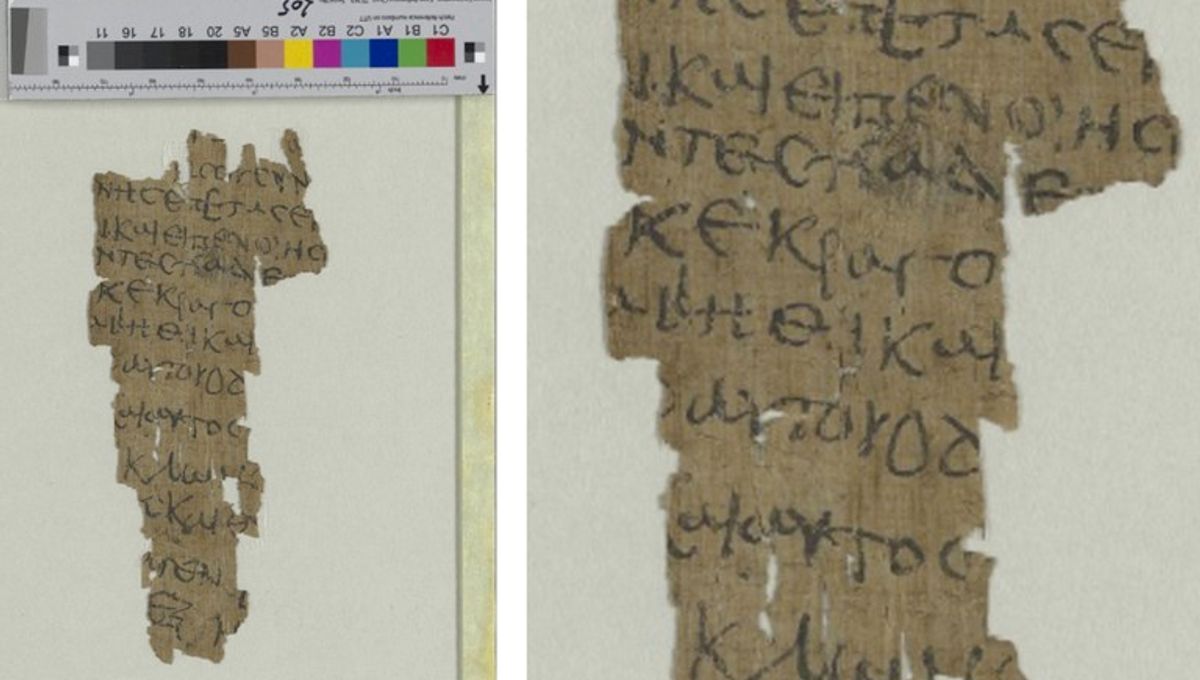
Jesus of Nazareth, the principal figure of Christianity, is both an incredibly influential figure and an obscure one. Although he probably existed (proof outside of biblical texts is limited to a few references), historians and theologians know very little about him, especially his early life.
There are apocryphal accounts, such as the Infancy Gospel of Thomas, that discuss young Jesus’s miraculous childhood activities, but such tales are not accepted as canon. Now, however, a newly discovered fragment of papyrus offers an even older version of this text.
Before discussing the new papyrus fragment, it is worth clearing up some details about the history of the Bible. Although this religious anthology is said to represent the canon of the Christian faith and is God’s indelible word, it has undergone significant changes over the centuries. The 66 books that make up the Bible were written by over 40 authors and across a wide period of time.
In addition, there are many other accounts known as Apocrypha, which are stories that are not accepted as Scripture, even though some may have once been considered as such.
One such piece of apocryphal literature has been sitting unnoticed for decades at the Hamburg Carl von Ossietzky State and University Library, a fragment of papyrus inventoried as “P.Hamb.Graec. 1011”.
According to papyrologists Dr Lajos Berkes from the Institute for Christianity and Antiquity at Humboldt-Universität zu Berlin (HU) and Prof Gabriel Nocchi Macedo from the University of Liège, Belgium, the fragment belongs to the earliest known example of the Infancy Gospel of Thomas.
Until now, the earliest known example of this text belonged to a codex from the 11th century CE, but this new piece was probably written sometime between the 4th and 5th century CE. This is obviously much closer to when the Infancy Gospel of Thomas was originally written – probably in the 2nd century CE.
As such, the papyrus provides new insights into the apocryphal stories that tried to depict the early life of Jesus as a supposedly miraculous figure. It also helps us understand how these stories were then transmitted over the centuries.
“The fragment is of extraordinary interest for research,” Dr Berkes said in a statement. “On the one hand, because we were able to date it to the 4th to 5th century, making it the earliest known copy. On the other hand, because we were able to gain new insights into the transmission of the text.”
“Our findings on this late antique Greek copy of the work confirm the current assessment that the Infancy Gospel according to Thomas was originally written in Greek,” added Dr Nocchi Macedo.
The fragment measures around 11 centimeters by 5 centimeters (4 inches by 2 inches) and contains 13 Greek lines, with about 10 letters per line.
It lay unnoticed for so long because scholars did not think it was relevant.
“It was thought to be part of an everyday document, such as a private letter or a shopping list, because the handwriting seems so clumsy,” Berkes explained.
“We first noticed the word Jesus in the text. Then, by comparing it with numerous other digitised papyri, we deciphered it letter by letter and quickly realised that it could not be an everyday document.”
By analyzing and comparing the use of words like “crowing” and “branch”, which appear in the text, the researchers were able to match it to the Infancy Gospel of Thomas.
“From the comparison with already known manuscripts of this Gospel, we know that our text is the earliest. It follows the original text, which according to current state of research was written in the 2nd century AD.”
Specifically, they connected it to a story known as the “vivification of the sparrows” and was probably created as a writing exercise in a monastery – which explains the poor handwriting.
The story itself explains the “second miracle” of Christ where the child Jesus was playing at a river fort where he made sparrows out of clay. When rebuked by his father, Joseph, for doing such a thing on the Sabbath, the child clapped his hands and brought the mud figures to life.
The study is published in Zeitschrift für Papyrologie und Epigraphik.
Source Link: Newly Discovered Papyrus Fragment Offers Insights Into Stories About Jesus' Childhood